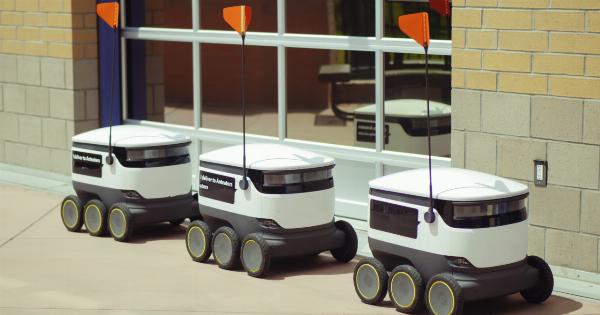Innovations in technology continue to revolutionize various industries, and the field of medicine is no exception.
Surgeons have long relied on their skill and expertise to perform intricate procedures, but now they have a new tool in their arsenal – robotic scorpions. Yes, you read that correctly. These cutting-edge machines are designed to assist surgeons in performing surgeries with unparalleled precision and efficiency.
The Rise of Robotics in Surgery
The use of robotics in surgical procedures is not a new concept. In fact, robotic-assisted surgeries have been around for several decades. However, the advancements made in recent years have taken this technology to a whole new level.
Robotic surgeries offer several advantages over traditional methods. The precision and dexterity of these machines allow surgeons to perform complex procedures with greater accuracy. This reduces the risk of human error and improves patient outcomes.
One of the most remarkable developments in robotic surgery is the use of robotic scorpions. These robotic devices are designed to mimic the movements of a scorpion’s tail, providing surgeons with an extra set of hands during a procedure.
How Robotic Scorpions Work
Robotic scorpions are equipped with advanced sensors and cameras that provide the surgeon with a real-time, high-definition view of the surgical site.
This allows for better visualization and helps the surgeon make more informed decisions during the procedure.
The robotic scorpion’s tail is made up of multiple segments that can move independently. Each segment contains miniature surgical tools, including scalpels, forceps, and suturing devices.
These tools are controlled by the surgeon using a console, which translates their hand movements into precise actions by the robotic scorpion.
Benefits of Robotic Scorpions in Surgery
The use of robotic scorpions in surgery offers several benefits:.
1. Enhanced Precision
The robotic scorpion’s ability to move its tail with utmost precision allows for more accurate and delicate surgical maneuvers. This is particularly beneficial in procedures that involve intricate structures or sensitive tissues.
2. Improved Dexterity
The multiple segments of the robotic scorpion’s tail mimic the flexibility and dexterity of a human hand, but with enhanced range of motion.
Surgeons can perform complex movements with ease, enabling them to navigate challenging anatomical structures more effectively.
3. Minimized Invasive Procedures
Robotic scorpions enable surgeons to perform minimally invasive procedures with greater precision. This means smaller incisions, reduced scarring, and faster recovery times for patients.
4. Reduced Fatigue
Surgeons can experience significant physical strain during long and complex surgeries. The use of robotic scorpions can help alleviate this fatigue by providing an extra set of hands to assist in the procedure.
5. Increased Surgeon Accessibility
The use of robotic scorpions enables surgeons to access hard-to-reach areas more easily, thanks to their flexible and extendable tail. This expands the range of surgeries that can be performed using minimally invasive techniques.
6. Improved Training Opportunities
Robotic scorpions offer a valuable tool for training future surgeons. Trainees can practice complex procedures in a controlled environment, gaining hands-on experience with the robotic technology before performing surgeries on actual patients.
Applications of Robotic Scorpions in Surgery
The applications of robotic scorpions in surgery are vast, covering a wide range of specialties. Some of the key areas where this technology has shown promise include:.
1. Neurosurgery
Robotic scorpions have the potential to revolutionize neurosurgery. The precise movements and enhanced visualization offered by these devices allow surgeons to navigate delicate brain structures with greater accuracy and safety.
2. Cardiovascular Surgery
In cardiovascular surgery, the robotic scorpion’s dexterity can be particularly beneficial. Surgeons can perform intricate procedures such as coronary artery bypass grafting or valve repair with enhanced precision and reduced invasiveness.
3. Orthopedic Surgery
Robotic scorpions are valuable tools in orthopedic surgery, especially in joint replacements. These devices can assist surgeons in achieving optimal alignment and implant positioning, leading to improved long-term outcomes for patients.
4. Gastrointestinal Surgery
The ability of robotic scorpions to navigate through narrow and complex gastrointestinal structures makes them highly useful in procedures such as colorectal surgeries or organ reconstructions.
5. Urological Surgery
Robotic scorpions have proven their worth in urological surgeries, including prostatectomies and kidney surgeries. The precise movements and improved visualization offered by these devices help preserve critical structures and reduce complications.
Challenges and Future Developments
While the use of robotic scorpions in surgery brings numerous benefits, there are also challenges to overcome. The cost of acquiring and maintaining this technology remains a significant barrier to widespread adoption.
Additionally, there is a learning curve associated with mastering the use of robotic scorpions, and surgeons need adequate training to fully harness their potential.
However, technology continues to evolve, and the future of robotic scorpions in surgery looks promising.
Engineers and researchers are continuously working to enhance the capabilities of these devices, making them more affordable, intuitive, and adaptable to various surgical procedures.
The Future is Here
The integration of robotic scorpions in surgical procedures marks a significant advancement in the field of medicine.
With their enhanced precision, improved dexterity, and unparalleled visualization, these devices are changing the way surgeries are performed.
As the technology continues to evolve and become more accessible, robotic scorpions have the potential to revolutionize healthcare, leading to better patient outcomes, reduced recovery times, and improved surgical techniques.



























